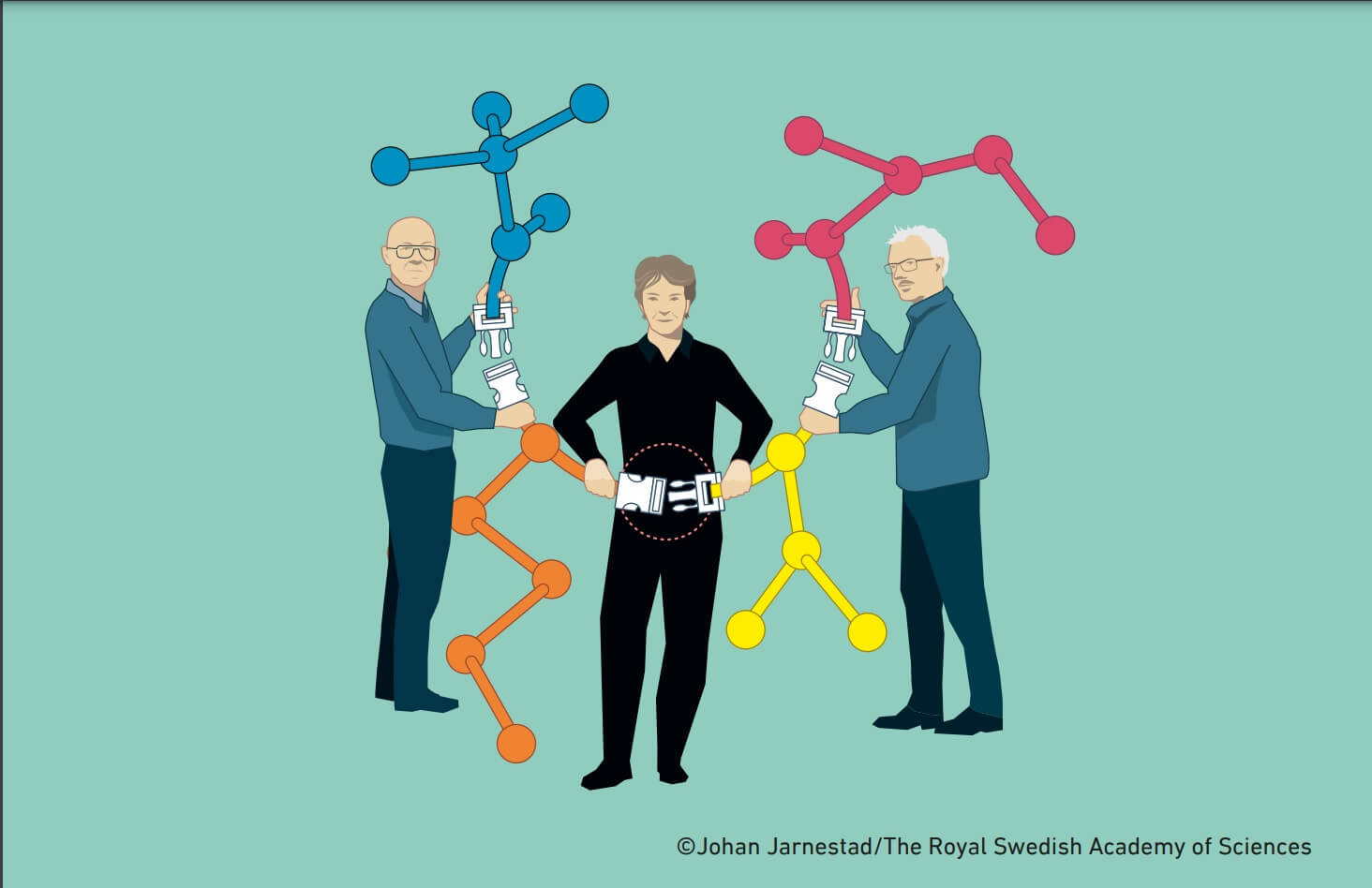The Nobel Prize in Chemistry for 2022 was awarded to three scientists working in the field of synthetic chemistry: Caroline Bertuzzi (Carolyn R. Bertozzi), Morten P. Meldal (Morten P. Meldal) as well as Karl Barry Sharpless (KarlBarrySharpless), thanks to "the development of 'click' chemistry and bio-orthogonal chemistry". This is Sharples' second win in chemistry - the previous one was in 2001
The Nobel Prize in Chemistry for 2022 was awarded to three scientists working in the field of synthetic chemistry: Caroline Bertuzzi (Carolyn R. Bertozzi), Morten P. Meldal (Morten P. Meldal) as well as Karl Barry Sharpless (KarlBarrySharpless), thanks to "the development of 'click' chemistry and bio-orthogonal chemistry".
- Carolyn R. Bertozzi was born in 1966 in the USA. Received a doctorate in 1993 from the University of Berkeley, California, USA. Currently serves as a professor at Stanford University, California, USA.
- Morten P. Meldal was born in 1954 in Denmark. Received a PhD in 1986 from the Technical University of Denmark. Currently serves as a professor at the University of Copenhagen, Denmark.
- Karl Barry Sharpless was born in 1941 in Philadelphia, USA. Received a doctorate in 1968 from Stanford University, California, USA. Currently serves as a professor at the Scripps Research Institute, La Jolla, California, USA.
Their functional chemistry works wonderfully

Sometimes simple answers are the best. Morten P. Meldal and Karl Barry Sharpless won the 2022 Nobel Prize in Chemistry thanks to advancing the field of chemistry into the era of functionality and laying the foundations for click chemistry. They share the award with Carolyn R. Bertozzi, who took click chemistry to a new dimension and began using it to map cells. The bio-orthogonal reactions she developed are currently contributing to the development of more effective and targeted treatments against cancer, among many other applications.
The 2022 Nobel Prize in Chemistry is about making challenging synthetic processes simpler. Barry Sharples and Morten Maldahl laid the foundations for a functional form of chemistry - click chemistry - in which molecular building blocks react together quickly and efficiently. Caroline Bertuzzi took click chemistry to a new dimension and started using it in live productions.
Chemists have long been driven by their desire to synthesize molecules of increasing complexity. In pharmaceutical research, this desire involved the artificial re-production of natural molecules with medicinal properties. This research produced admirable molecular structures, but the reactions required to prepare them took a long time and were very expensive.
"This year's Nobel Prize in Chemistry deals with simple and easy reactions. Functional molecules can be prepared even by using the main route of synthetic chemistry," said Johan Åqvist, chairman of the Nobel Committee in Chemistry.
Barry Sharples, the winner of the Nobel Prize in Chemistry for the second time today - began the development of this field. In 2000, he came up with the idea of click chemistry, which is a type of simple and reliable chemistry, in which reactions occur quickly and without receiving unwanted by-products.
Soon after, Morten Maldahl and Barry Sharples, independently of each other, introduced what is now considered the 'crown jewel' of click chemistry: the copper-catalyzed azide-alkyne cycloaddition. It is an elegant and efficient chemical reaction that is now in common use. Among other and many other applications, the reaction is used in the production of medicines, in the mapping of DNA and in the development of special materials for certain uses.
Caroline Bertuzzi Promoted click chemistry to a new level. In order to map important but elusive to measure biomolecules that are on the outer surface of the cells - glycans - she developed click reactions that work inside the living productions. The bio-orthogonal reactionsIts occurred without interruption to the normal chemical activity of the cell. These reactions are currently used worldwide to study cells and monitor biological processes. Thanks to the use of the bio-orthogonal reactions, researchers have been able to improve the targeting of anti-cancer drugs, drugs that are currently in clinical trials.
Click chemistry as well as bio-orthogonal reactions advanced the field of chemistry to the era of functionality. This age will provide humanity with the greatest benefits. Carolyn R. Bertozzi was born in 1966 in the USA
Additional Nobel Prizes awarded for 2022:
- Nobel Prize in Physics for 2022 to three scientists in the field of quantum entanglement
- Nobel Prize for Medicine to the Swede Svante Pavo, the discoverer of the Denisovan man and the decipherer of the genome of extinct human species
More of the topic in Hayadan:
- The 2022 Wolf Prize in Chemistry promotes the understanding of the chemistry of intercellular communication
- An electrically charged carbon compound could be a future semiconductor
- Why some red giant atmospheres have more carbon than oxygen
- State-of-the-art metal-organic hybrids could revolutionize materials science and chemical engineering
